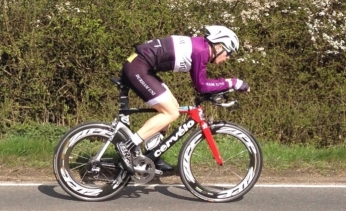Balance of Recovery and Adaptation for Sport Performance
There has been much recent discussion about the optimal balance of recovery strategies to enable effective return to training, and adaptive processes which occur as the result of training to improve sporting performance.

I have been reading the scientific reports to try and gain an understanding of this balance between recovery and adaptation. However, my investigations were put into context after attending two fascinating meetings last week where insightful talks were given by Dr Hannah Macleod Olympic gold medallist and presentations at the King’s Sport and Exercise Medicine Conference.
The scientific principle behind exercise training, of any sort, is that improvement in exercise performance follows from the cycle of overload exercise, followed by recovery phase during which adaptive changes occur in musculoskeletal, cardiovascular, metabolic and neurological systems to improve exercise performance capacity. If sufficient recovery is not taken before next training session, then rather than a progressive stepwise upward improvement in performance capacity, a downward progression occurs. In order to avoid this overreaching and overtraining scenario, rather to improve performance, training cycle as described by Dr Macleod often consists of 3 weeks “on”, followed by “rest” week together with well structured napping.
Theoretically, if the amount of recovery needed could be shortened, then more training could be done and thus potentially more adaptive advantages gained. However, by shortening recovery time with various strategies, this might actually curtail and reduce the very adaptive changes being sought. Considering recovery and adaptive responses of skeletal muscle to exercise, there are recent apparently contradictory reports on the benefits of ice baths. To ice bath or not to? Certainly for muscle injury RICE (rest, ice, compression, elevation) regime is well established. Does the same apply for skeletal muscle recovery and adaptation post exercise? The most recent study on 9 non-elite athletic males revealed that post resistance exercise there was no difference in the inflammatory markers or cellular stress markers in skeletal muscle whether recovery was either active or with cold water immersion. Nevertheless a previous study 2015 by the same group had reported attenuated gains in muscle mass and strength with cold water immersion recovery during 3 months of resistance training in 24 non-elite athletic males. The main issue seems to be that it all depends on the part of the long term training cycle and the type of sport in which the athlete is involved. For example, during pre-season training, where long term adaptations are being sought, then an ice bath might potentially attenuate adaptive responses gained from strength training. On the other hand, in the acute clinical setting, post match in a multi-day competition, an ice bath may be of benefit during the course of this competition period. Certainly Dr Macleod described having a compressive ice system on the team bus post match during the Olympics in Rio where 8 matches were played over 14 days. So recovery, especially from any impact injuries, was far more important than considerations of longer term performance in resistance training post Olympics. Not to mention the psychological beneficial effect to athletes with reduced perception of fatigue and muscle soreness and feeling in control of all factors possible.
Finally I would also suggest that just as there is variation between individuals in the positive adaptive responses to exercise, probably genetically determined, there may also be individual variation in the extent and benefits of recovery strategies. For example, in a clinical setting, an over-response of the inflammatory pathways can actually cause harm, such as in autoimmune disease. Another point is that I have restricted this blog to discuss cellular responses of skeletal muscle to resistance exercise and competition. Clearly there are other mechanisms involved in exercise training adaptations such as the neuroendocrine system, together with other types of exercise training and other recovery strategies.
In conclusion, just as training is periodised, it would appear that recovery strategies should also be periodised in conjunction with the phase of the training /competition cycle and type of sport. Apart from the scientific rational, the psychological aspects for athletes also has to be considered.
For further discussion on Endocrine and Metabolic aspects of SEM come to the BASEM annual conference 22/3/18: Health, Hormones and Human Performance
References
“Science in Elite Sport” talk by Dr Hannah Macleod at University of Roehampton 6/12/16
“Assessing the field of play” King’s Sport and Exercise Medicine Conference, Guy’s Hospital 5/12/16
Inflammation: why and how much? Dr N. Keay, British Association of Sport and exercise Medicine 2017
Endocrine system: balance and interplay in response to exercise training
Rapid recovery versus long term adaptation
Cold water therapy and bad journalism
Do post-work out ice bath help with recovery of sore muscles?